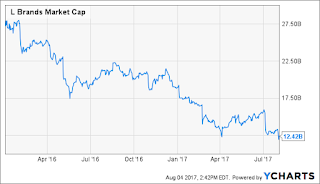How about your Moat? And why am I still talking about them?
The concept of the Moat may be an old and worn one to the
financial/investment community, but it is a fairly new one for me. So my
infatuation with the concept continues because it is an excellent way to merge
the tangible and intangible elements of business success. More, it focuses all
business efforts on one goal: sustainable value creation-value being the
difference between risk and reward.
That being said, I have always faulted the investment
community for not considering the real boots-on-the-ground factors in a
company’s performance and potential. The moat concept partially fills that
need, but I think the investment gurus are not qualified to drill deeper into
what really distinguishes and protects
a company in today’s market.
A key criterion for all moat-evaluation is “barriers to
entry.” In the world of apparel and retail, this may be just a little stupid.
Really. Anyone with a good concept, good product and good execution, especially
in today’s ultra-connected world, may waltz into a product space and disrupt
it, compete in it, dominate it before we get our next coffee. This has always
been the case; the difference today is the lightning speed at which it can
happen enabled by technology.
I know I have championed evolution as the founding principle
of change in the retail industry, but within the evolution there is the moment
of emergence, blast-their-ass if you will, where a company emerges from oblivion
to get the attention of many. Everlane, Tommy John, Untuckit, Bonobos, more. In
most cases, these entrepreneurial heroes have been working for years with no
satisfaction, then it frkn happens…
So they cross the moat and invade the castle of the
established companies, how? By being cheaper? This has never been a weapon for
new entrants. It is only the weapon of the old combatants who have stale
cultures, which discourage entrepreneurship.
For the newbies, it is about being more interesting, more exciting, more
desirable, while maintaining VALUE perception. Disruption crumbles walls.
So how do we really
judge a moat? The investment world has metrics to assess the wideness or even
existence of a moat. Because, as an informed investor, I need to know not only
what is in the moat, but what is inside the castle. What are the elves doing to
create and maintain sustainable value?
Morningstar’s report, “Wide Moat Investing” (https://www.cfasociety.org/cleveland/Lists/Events%20Calendar/Attachments/979/Wide%20Moat%20Investing%20-%20CFA%20cleveland%20May%202016.pdf)
defines its moat rating (Wide, Narrow, None) in terms of “Sustainable
competitive advantages that allow a company to generate positive economic
profits for the benefit of its owners for an extended period of time. “ Key
word-Sustainable. Price by itself is not
a sustainable advantage.
The report further breaks down the five sources of economic
moats:
1.
Intangible Assets
2.
Switching Costs
3.
Network Effect
4.
Cost Advantage
5.
Efficient Scale
Note only one of the above, Intangible Assets, relates to the
most important elements of success and market penetration (Moat-busting) today-
product, position, value perception, and shopping experience. What the elves are doing inside the castle. The report gives examples of Wide, Narrow and
No Moat companies with a brief explanation:
1.
Wide- Coca Cola- “It’s just sugar water, but
consumers pay a premium.”
2.
Narrow- Adidas- “Has strong and recognized brand
in athletic footwear.” (This is why we need to look beyond finance reports for
the real answer. Brands are BS in today’s
market; a brand is the poorest barrier to entry and the fatal flaw of those
who hold on to it as a moat-widener or even moat-element)
3.
None- United Continental- “Name recognition
doesn’t result in sufficient pricing power.” This explanation applies more to Adidas, and vice versa for Adidas’
explanation.
I note that the report chooses Macy’s as the No Moat example
under switching costs: “Consumers easily pick and choose among many retailers.”
What I said—Price does not help your
moat. And, if you depend on it, as Macy’s has been, you are filling in your own
moat.
An important aspect of Moat Evaluation in the report is the
“Moat Trend.” As Warren Buffett said, over time the moat is getting wider and
narrower constantly, as business competitive situations are typically dynamic.
Moat fluctuations are rated as Positive, Negative or Stable. Let’s pick some examples
that would be familiar to us:
1.
Wide Moat-Negative- Walmart. “Shift to
e-commerce will likely take share and make large Walmart stores less productive
at the margin.” Yes. Even if Walmart expands its e-commerce business as it is
trying desperately to do, it will be cannibalizing big chunks of its retail
space, reducing sales/sq. ft. and revenue/employee. (NOTE: Next article up will
evaluate Walmart and Target’s prospects-news at eleven).
2.
Narrow Moat-Stable-Ross Stores. “Competition
likely to increase, but continued growing scale at Ross should offset major
threats.” Maybe, but this is more true of TJX than Ross.
3.
No Moat- Positive-Not given in the report, but I
might elect Target as my candidate here.
So, if you are paying attention here, and believe in the
concept of the Moat, no matter who you are in the fashion/retail industry, you
need to keep in mind two realities to keep your Moat afloat and create
sustainable value over time:
1.
Any day a little startup ant of a company
can turn your castle into a wasteland before you can say stock options.
2.
Your best defense is a good offense. Make
sure the elves are working on the vision of a future with sustainable value
creation. Not price, not community events or symposia (not that there is
anything wrong with that), but real, bold, disruptive results in every area
from design to merchandising to production to retail-every day in every way.
Folks, economic data that define
the success of a company for its shareholders are the RESULT of these
decisions. And what the elves are doing.











